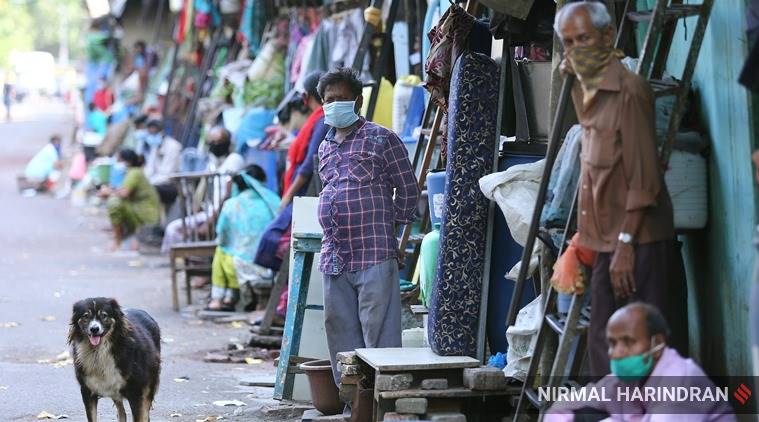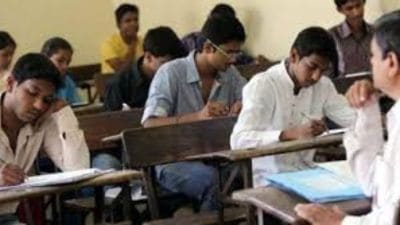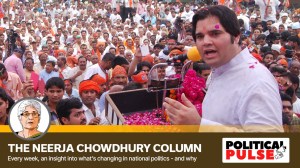- India
- International
In Mumbai slums, signs of exodus: locked doors, empty lanes
That is only a fraction of the financial capital’s slum population of over 60 lakh — but there are, for the first time ever, entire lanes of empty homes in the slums.
 As the exodus continues at the start of the fourth phase of the lockdown, the silence in the gulleys of Dharavi, Mandala, Shivaji Nagar, Shastri Nagar, and Malvani could deepen.
As the exodus continues at the start of the fourth phase of the lockdown, the silence in the gulleys of Dharavi, Mandala, Shivaji Nagar, Shastri Nagar, and Malvani could deepen.
Across Mumbai’s dense shantytowns, where the relentless streams of walking migrant workers originate, the exodus is beginning to leave what will be a lasting mark for months to come.
There are padlocks on unsteady doors, threadbare bedding rolls stacked behind the downed shutters of sweatshops, and a sudden hush in the alleyways. Unofficial estimates peg the number of working class Mumbaikars who have left the city since the imposition of the lockdown — either on foot or hitching rides or aboard buses and the Railways’ special Shramik trains — at 6 to 8 lakh.
That is only a fraction of the financial capital’s slum population of over 60 lakh — but there are, for the first time ever, entire lanes of empty homes in the slums. As the exodus continues at the start of the fourth phase of the lockdown, the silence in the gulleys of Dharavi, Mandala, Shivaji Nagar, Shastri Nagar, and Malvani could deepen.
“About a quarter of the people have left, or 20 per cent in any case,” says Mohammed Umar of Janta Nagar and Indira Nagar, together comprising about 22,000 homes in the eastern suburb of Govandi. “The nakas where workers gathered often even after the lockdown was imposed are now completely silent,” he says.
The ‘naka-workers’, called thus for the road corners from where labour contractors collect them, are daily-wage labourers. “Some cried for days before finally leaving, penniless and desperate,” Umar adds.

In Shastri Nagar of Bandra West and in Dhorwada in Dharavi, too, the locked rooms stand out. The lanes of these slums are far from empty though, with population densities among the highest anywhere in the world.
“There are four factories in my lane, and about 80 to 100 people have left from these factories alone,” says Gulzar Khan, a trader of denim goods in Dharavi. The units, tiny spaces with sewing machines lined up, were garment and denim goods sweatshops during the day, and dormitories by night.
Kalamuddin, another resident of Dharavi, says the ‘bissis’ or mess arrangements, where workers could eat twice a day at homes in the locality at a fixed monthly rate, had to close operations, directly impacting food availability for tens of thousands of single men working in the slum’s dozens of industries. “They’ve all left. After all, how long can they line up for food?”
According to Kalamuddin, nearly 70 to 80 per cent of those who left from Dharavi, a sprawling slum of nearly 8.5 lakh people packed into a geographical area of 2.4 sq km, were single men of all ages, with impoverished families in Bihar, Uttar Pradesh, and Jharkhand.
Just outside the slum, near Sion station and along Western Express Highway and the Dharavi-Sion Link Road, small groups of men can still be seen walking or trying to board a bus to Thane city, from where buses to other states are departing.
“One reason why entire lanes are emptying out is that the neighbours often all belong to one region, and they would have left together,” says Shweta Damle of Habitats and Livelihood Welfare Association (HALWA), which wrote to Chief Minister Uddhav Thackeray on April 15, asking the state government to help daily-wage labourers, head-loaders, construction workers, street vendors, domestic workers, security guards, and small-scale manufacturing workers in recycling, scrap and garment industries. They recommended assistance, including groceries and wage assistance to help these workers survive the lockdown. “Now the poor feel forced to travel home in unsafe conditions with no work, no pay, no means to survive,” Damle says.
In his address to the state on Monday, the Chief Minister requested workers, especially “sons of the soil” from other districts of Maharashtra, to defer their departure.
In Thakkar Bappa Colony in Kurla (West), residents said at least 800 families had left since March-end. Most residents here work in the footwear industry, making rubber and plastic slippers. Predominantly from Rajasthan, these workers have lived here for over a decade.
“Many began leaving as there was no work and hence no way of paying rent for these months. A few families sold whatever footwear they had already made, through their contacts or on the roadside,” says Guman Chauhan, a resident of the colony.
Chauhan’s room is owned by a relative and so, there has been no demand for rent so far. “Many of my friends who left said they will see how the situation plays out in the next few months. A few said that it may be better to find work closer home. If they find work in manufacturing units in Rajasthan, they will stay back,” Chauhan says.
In Jogeshwari’s Shastri Nagar, too, residents say that in some chawls, as many as one in three homes is empty. “Usually, there is a crowd around the vegetable or fruit seller or near the shops on the main road. The numbers have gone down. There is clearly more space to walk,” says Jogeshwari resident Jagdish Kumar Yadav. He adds that those who own homes have not taken all their belongings or sold their rooms, indicating an imminent return. Some left when a few Covid cases were reported close to their living quarters.
In Malvani’s Ambujwadi slum, resident and activist Rachita Balekar says she chops vegetables from noon till 4 pm every day for a community kitchen. “But neither do we have resources to continue much longer nor can such efforts reach everybody. Many who drive autorickshaws put their wives and children into their three-wheelers and left for villages 1,500 km away. Thousands have left on foot, hoping to get a truck or bus later. Some smaller lanes in Ambujwadi are slowly emptying out,” she says.
Khan, the denim goods trader in Dharavi, says a brief labour shortage may ensue on account of the exodus, and wages could rise for those still in the city. But for industries such as garments, the Eid season is over, and nothing can be said about whether demand will revive before Diwali.
“In any case, workers have to return to Mumbai eventually – it’s not as if livelihood options will appear overnight back home. Poverty brought them here, so imagine the conditions driving them back to joblessness and more poverty,” he says.
Apr 24: Latest News
- 01
- 02
- 03
- 04
- 05







































